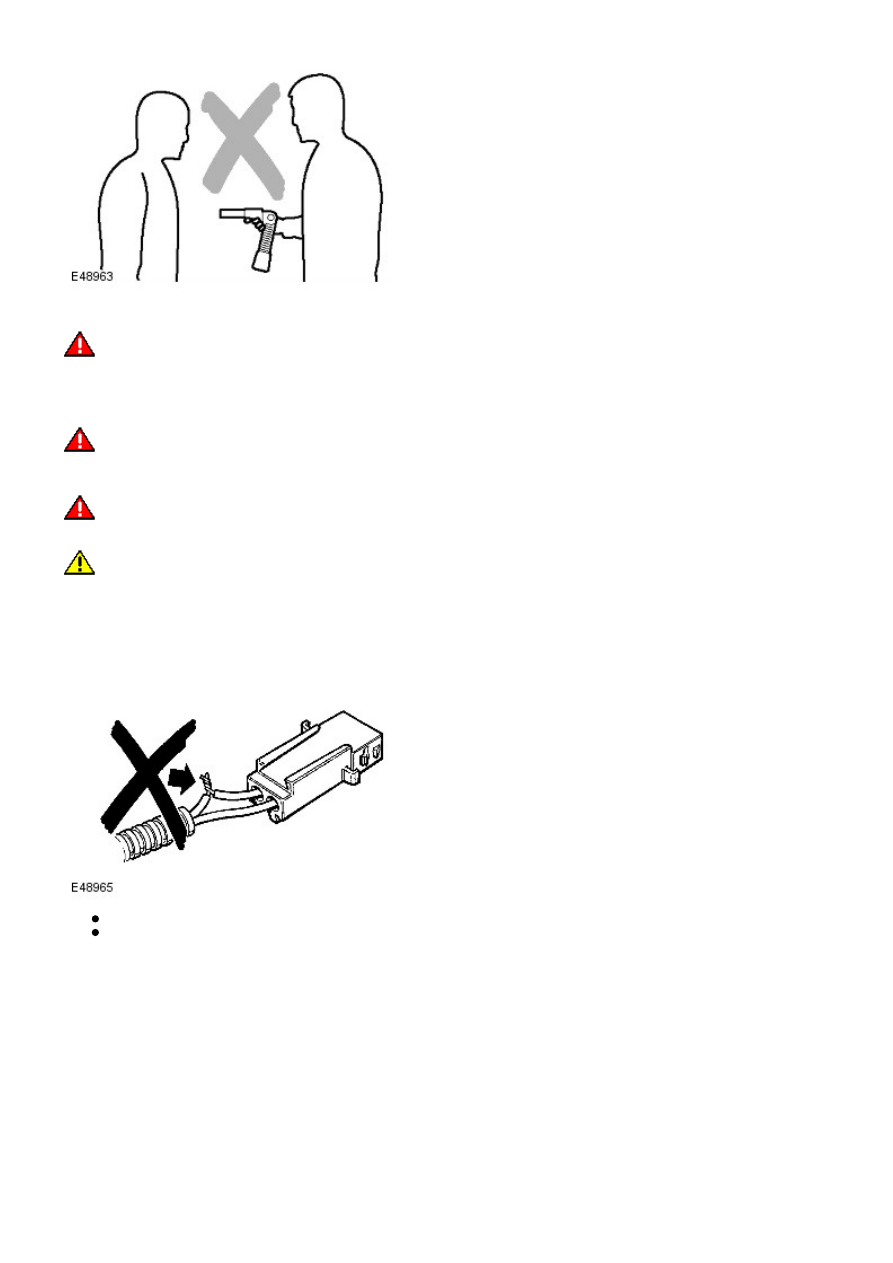Frelander 2. Manual - part 7

• W ARNINGS:
W hen handling a side curtain airbag module, hold by the gas generator housing, DO NOT hold by the airbag. Do not
wrap the thumb around the gas generator while holding. Do not drape airbag over shoulder or around neck. For seat buckle
type pre-tensioners, hold by the piston tube, with the open end of the piston tube pointing towards the ground and the
buckle facing away from your body. Do not cover the end of the piston tube. DO NOT hold buckle type pre-tensioners by
the bracket assembly or cable. Never point the piston tube towards your body or other people.
Airbag modules and seat belt pre-tensioners are classed as explosive devices. For overnight and longer term
storage, they must be stored in a secure steel cabinet which has been approved as suitable for the purpose and has been
registered with the local authority.
Store airbag modules or seat belt pre-tensioners in a designated storage area. If there is no designated storage
area available, store in the locked luggage compartment of the vehicle and inform the workshop supervisor.
CAUTION: Improper handling or storage can internally damage the airbag module making it inoperative. If you
suspect the airbag module has been damaged, install a new module and refer to the deployment/disposal procedures for
disposal of the damaged module.
SRS harness and connectors
Always observe the following precautions with regards to SRS system electrical wiring:
Never attempt to modify, splice or repair SRS wiring.
Never install electrical equipment such as a mobile telephone, two-way radio or in-car entertainment system in
such a way that it could generate electrical interference in the airbag harness. Seek specialist advice when
installing such equipment.
• NOTE: SRS wiring can be identified by a special yellow outer sleeve protecting the wires (black with yellow stripe
protective coverings are sometimes used).